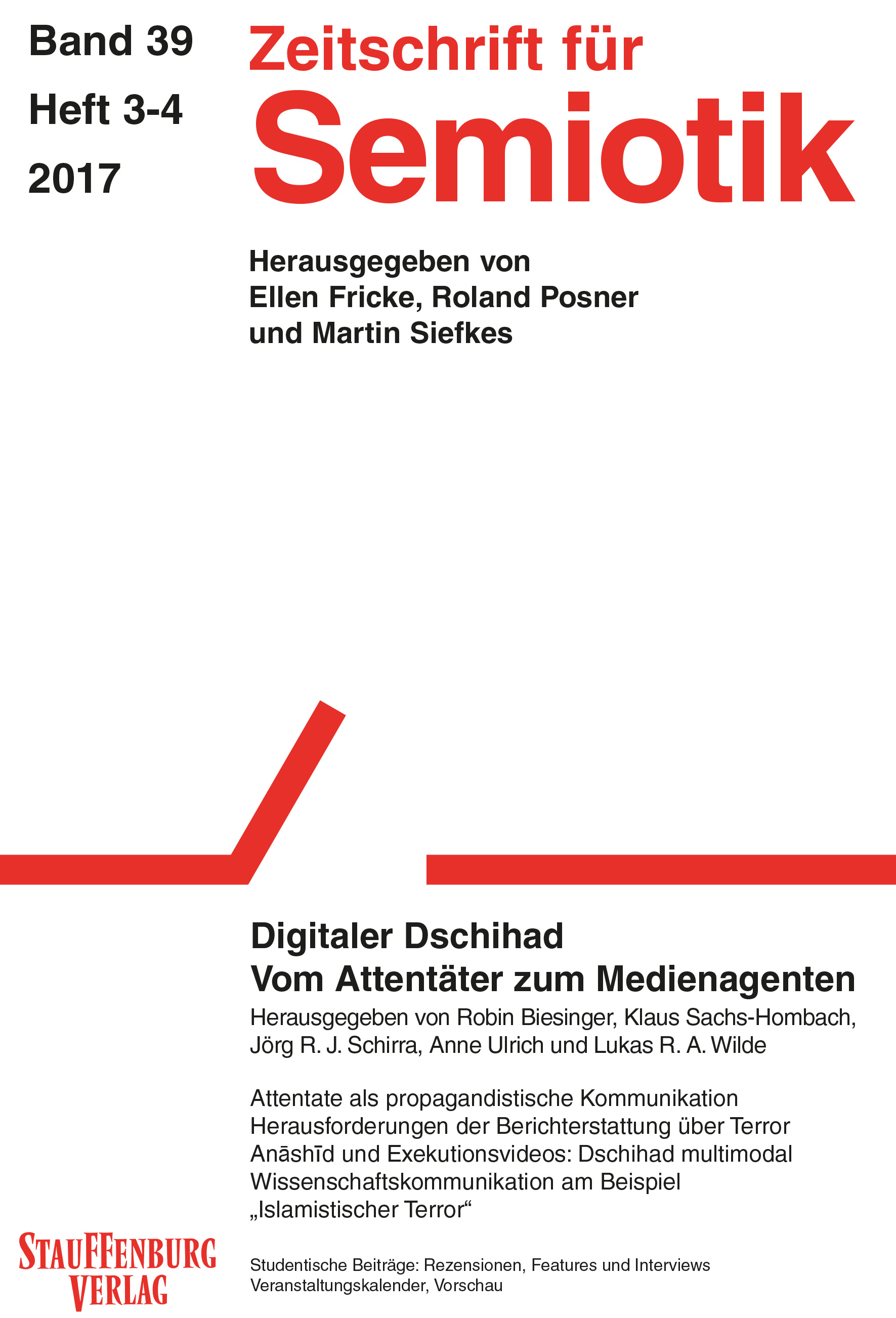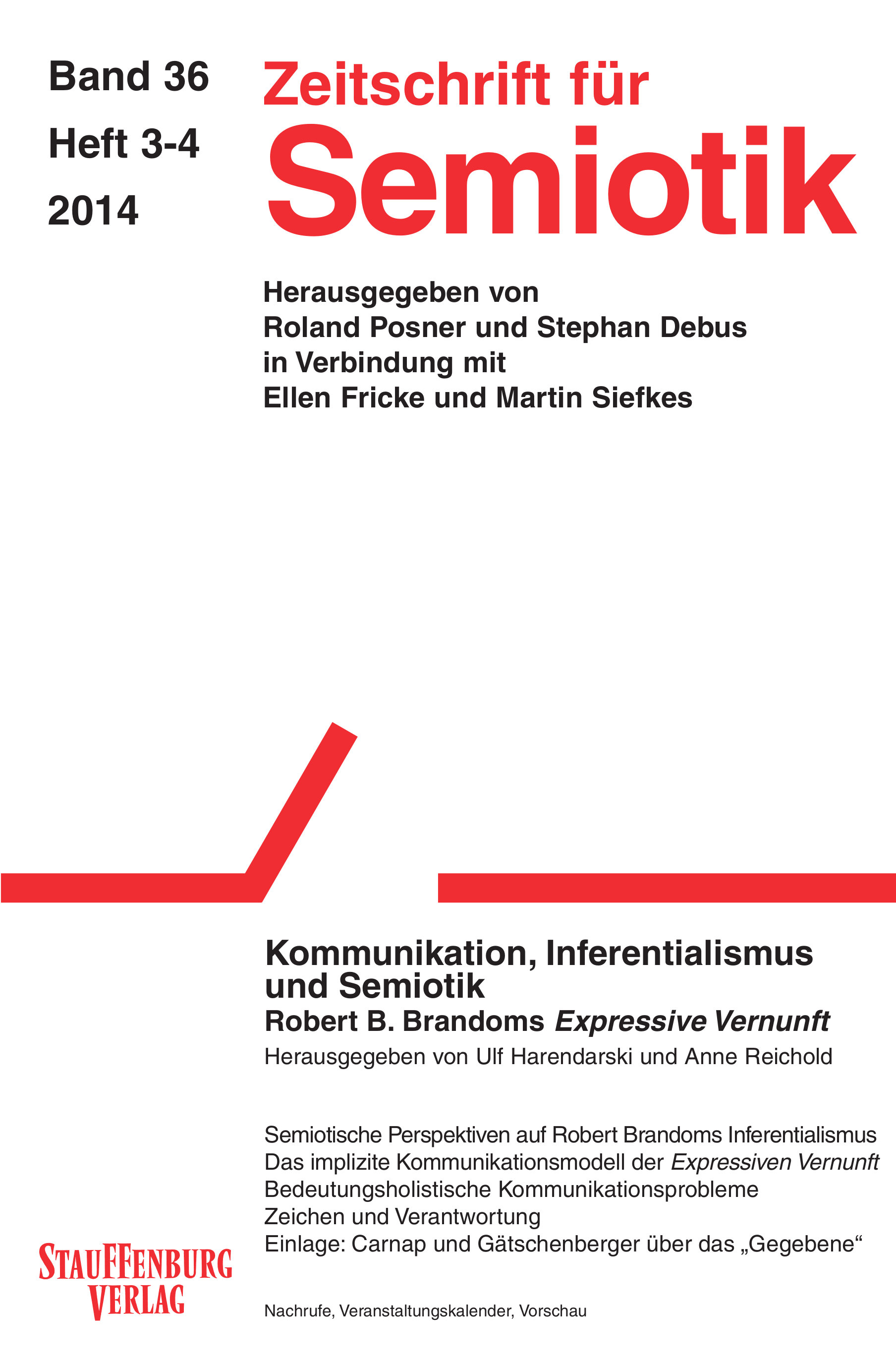Archives
-

Selbstoptimierung
Vol. 45 No. 3-4 (2023)This issue explores the phenomenon of self-optimization from an interdisciplinary perspective. The contributions examine the historical foundations, current manifestations, and future trajectories of a discourse that affects both individual life practices and broader social structures. At the core are practices, technologies, and conceptual frameworks of self-enhancement – from digital tracking systems and social media to posthumanist visions. The issue critically reflects on the ethical, social, and cultural implications of these developments. It shows how self-optimization can serve both as an expression of individual autonomy and as a mechanism of societal control. The relationship between freedom, regulation, and responsibility thus being reframed.
-

Innovative Methods in Multimodal Comics Research
Vol. 45 No. 1-2 (2023)This special issue on innovative methods in multimodal comics research brings together linguistic as well as inter- and transdisciplinary contributions engaging with the semiotic and multimodal wealth of comics, graphic novels, and other forms of visual narratives. The contributions connect to recent research with new challenges and solutions and engage in dialogue across various approaches to the multimodality of comics. In our introduction to the issue, we want to address this ‘multimodality of comics’ further and give some explanatory notes on our understanding of this concept and the development of the field of research connected to it.
-

Italian Semiotics II
Vol. 44 No. 3-4 (2022)The second part of this two-volume issue focuses on distinct strands and fields within Italian semiotics. It highlights areas in which semiotic thinking in Italy has taken particularly distinctive forms - from digital media, the arts, and film to music, law, ethnosemiotic inquiry, cognitive approaches, and social practice. The contributions illustrate how Italian semiotic research continues to evolve, shaped by theoretical innovation and shifting societal contexts.
-

Italian Semiotics I
Vol. 44 No. 1-2 (2022)This special issue marks the first part of a two-part exploration into Italian semiotics, offering a self-reflective perspective. It documents and critically reflects on the development of semiotic research in Italy over the past decades. Rather than attempting a comprehensive historical account, the contributions aim to map the diverse conceptual landscapes and methodologies that have shaped Italian semiotics, spanning areas such as memory studies, religion, advertising, food, fashion, and urban spaces. Through these various lenses, the issue captures the intellectual dynamism and interdisciplinary richness that characterize semiotic inquiry in Italy today.
-

Und in alle Ewigkeit … Kommunikation über 10000 Jahre: Wie sagen wir unsern Kindeskindern wo der Atommüll liegt?
Vol. 43 No. 3-4 (2021)Originally published in 1984, issue 8, 3 “Und in alle Ewigkeit … Kommunikation über 10 000 Jahre” [And Unto Eternity … Communication Across 10 000 Years] is reprinted here in its original, unaltered form. The issue explores long-term communication strategies in the context of radioactive waste disposal. Semiotic perspectives are interwoven with historical, religious, and societal practices and examined for their viability in addressing extremely long-term communication tasks. The reprint is framed by a new foreword and afterword. The digital edition includes only these newly written texts. They reflect on developments over the past decades, contextualize the concepts proposed at the time, and connect them to current discourses.
-

Mental Spaces
Vol. 43 No. 1-2 (2021)This special issue sheds light on the process of meaning constitution in face-to-face interaction, combining approaches based on cognitive frames with mental space theory. Deliberately avoiding the juxtaposition of interactional and cognitive approaches, the contributions of this issue establish a link between data-based multimodal interaction research on the one hand and cognitive-semantic descriptive approaches and categories on the other, with some contributions incorporating frame-semantic perspectives.
-

Soziale Medien
Vol. 42 No. 3-4 (2020)This issue combines an interdisciplinary range of approaches to the defining media phenomenon of our time, focusing on semiotic approaches in social media studies. Social media are identified as a place of online manipulation, dark posts and deplatforming processes on Facebook are investigated, and the spread of extremist movements on Telegram is highlighted. Models of attention economics are applicable to the success of social media, if we consider their problematic reconfiguration of our social and communicative priorities. Avoiding a one-sided perspective, the issue also highlights positive aspects of social media, such as the possibility for social movements, the distribution of critical perspectives, and the potential for connecting marginalised communities.
-

Schlagersemiotik. Beiträge der Passauer Mediensemiotik
Vol. 42 No. 1-2 (2020)The issue is dedicated to Schlager as a subgenre of (primarily German) folk music from various disciplinary and theoretical perspectives, starting from the assumption that Schlager cannot be explained without reference to filmic sign systems as well as social, cultural and national meaning-making processes. The semiotic perspective enables an in-depth analysis of the embedding and functions of Schlager in German-speaking culture, especially in film and entertainment, with a particular focus on the first post-war decades. The contributions shed light on, among other topics, the role of Schlager in aligning individual desires with collective needs in the GDR (former East Germany), the depiction of an idealised world in West German post-war Schlager films, the flexible adaptation of Schlager to cultural change and the surprising functions of Schlager in auteur films of the 1960s.
-

Semiotik der Diaspora
Vol. 41 No. 3-4 (2019)Dedicated to the semiotics of diaspora, this issue examines the complex relationships between literary, discursive and rhetorical sign production in contexts of diaspora, exile, and migration. The various contributions explore the impact of different experiences of migration and landing on the narratives and constructed identities of diasporic communities. Using various textual genres and historical contexts, the articles shed light on semiotic principles of cultural identity construction and hybridity within the diaspora and in relation to it. It becomes clear that the influence of diasporic meaning construction goes far beyond diaspora communities, influencing society as a whole and shaping our contemporary globalised world.
-

Semiotische Medientheorien
Vol. 41 No. 1-2 (2019)The issue presents semiotic approaches in media studies, investigating the relationship between sign systems, media, and communication situations. The contributions reflect on the theoretical and methodological foundations of semiotic media theories, and apply them in a range of empirical studies. Particular attention is given to the analysis of multimodal phenomena and to the significance of praxeological approaches. By integrating diverse disciplines and methodological approaches, the contributions in this issue connect various theoretical and empirical strands of semiotic media theory, fostering a fruitful interdisciplinary dialogue.
-

Themenoffenes Heft
Vol. 40 No. 3-4 (2018)This issue explores a diverse range of topics within the fields of semiotics, communication, and media studies. It includes an analysis of diagrammatic thinking in mathematics and music, factors influencing efficient professional communication, and the semiotics of machine learning in language assistant systems. Further, it examines the influence of physicality on the development of the alphabet, the portrayal of researchers in TV documentaries, and the role of laughter in TV advertising. Further contributions discuss hypostatization in anthropocentric sign systems and investigate the impact of digital media on social interactions. Each article provides unique insights into how meaning is constructed and communicated across different media and contexts.
-

Überwachung 2.0 – Zwischen Kontrolle und Komfort
Vol. 40 No. 1-2 (2018)Surveillance and control are fundamental social practices that sustain social stability, both in autocratic and in democratic societies. The issue explores the various dimensions of surveillance, privacy risks, and control connected with contemporary digital technologies. Historical and theoretical perspectives are examined, with a focus on Foucault's Panopticon model and new forms of digital surveillance, such as algorithmic methods steering consumer behavior and social media networks. New forms of (self-)surveillance through apps and social media, changes in societal attitudes concerning privacy, and the depiction of surveillance in films and TV series are further topics.
-

Digitaler Dschihad. Vom Attentäter zum Medienagenten
Vol. 39 No. 3-4 (2017)The issue deals with the propaganda and media strategies used by Islamic terrorist organisations. Contributions investigate the audiovisual propaganda formats of the so-called Islamic State (IS), the use of media techniques of various degrees of professionality, the rhetorical mechanisms of multimodal propaganda communication, and how to explain scientific results about islamic terrorism to the general public.
-

Semiotik als Theorie der Digitalen Geisteswissenschaften
Vol. 39 No. 1-2 (2017)The digital humanities are a dynamic field of research at the interface between research questions in the humanities and applied computer science. Can semiotics contribute to a better theoretical underpinning of this highly innovative research? The articles in this issue examine the promise of semiotic theories and terminologies for the reflection and development of the digital humanities, where new and innovative approaches towards complex multimodal texts and communication have recently been developed.
-

Themenoffenes Heft
Vol. 38 No. 3-4 (2016)This open-topic issue brings together contributions from theoretical and empirical gesture research, which are examined in their relation to semiotic and anthropological theories, truth-functional semantics in the tradition of Alfred Tarski, research on technical language terminologies and the study of historical drama using approaches from cognitive linguistics.
-

Zeichen im öffentlichen Raum: Funktionalisierung, Ästhetisierung und Mediatisierung
Vol. 38 No. 1-2 (2016)This issue deals with semiotic aspects of metropolitan studies. Urban signs range from traffic signs and street names to monuments, street art and advertising to semiotic aspects of architecture and urban design. The issue's contributions deal with the memory culture of monuments and street names, the changing aesthetic perception of neon signs, political protest communication, phonetic transcriptions in graffiti and advertising, and QR codes as a link between urban and digital or virtual spaces.
-

Biosemiotic Ethics
Vol. 37 No. 3-4 (2015)This issue presents the rapidly growing field of biosemiotic ethics. In the past two decades, biosemioticians have began to tease out the ethical implications of semiosis as a capacity of living beings. The foundational argument is that if semiosis is a morally-relevant capacity, and if all living systems are semiotic, then biosemiosis can serve as the basis for justifying the attribution of moral status to humans, to animals and plants, and even to ecosystems. Biosemiotic ethics opens the road towards a perspective that connects ecological thinking with ethical perspectives.
-

Lachen als Zeichenprozess
Vol. 37 No. 1-2 (2015)The thematic issue “Laughter as a sign process” examines laughter from different disciplinary perspectives, in view of its semiotic dimensions as a means of communication. It provides an overview of laughter research, combining approaches from psychology, linguistics, philosophy, comics research and other fields. The contributions investigate laughter as a symbolic and communicative phenomenon in its psychological, historical, literary, and cultural dimensions.
-

Kommunikation, Inferentialismus und Semiotik. Robert B. Brandoms „Expressive Vernunft“
Vol. 36 No. 3-4 (2014)This special issue investigates the philosophical and linguistic pragmatism developed by Robert B. Brandom in his book Making It Explicit. From various perspectives, the contributions of the book investigate the connections between various aspects of Brandom’s pragmatism and semiotic theories and approaches.

